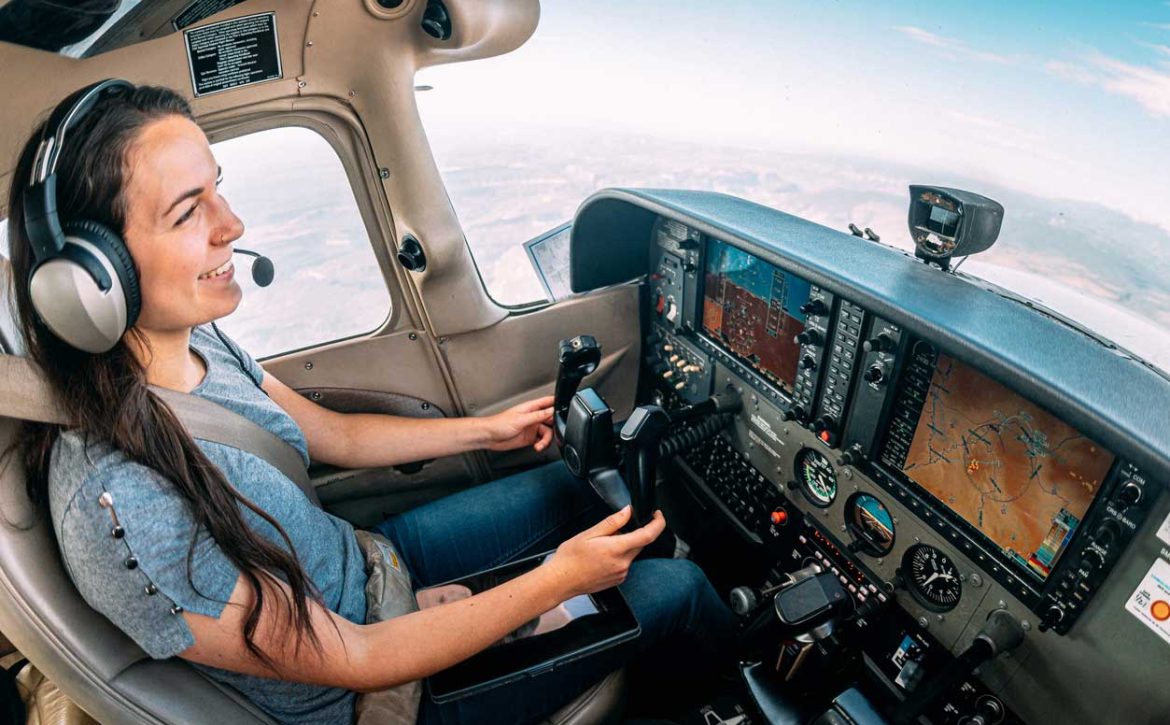In the fixed wing airplane world, pilots often refer to their pilot’s license as a “certificate”. Essentially, both terms mean the same thing and are interchangeable (although, technically, they are slightly different). For the purposes of this article, we intend “certificate” and “license” to represent the same “pilot status”. According to AOPA, the most accurate description of the certificate is a “license to learn”. Below, learn more about the different pilot licences and levels of pilot certificate.
The Three Pilot’s Certificates Explained
Student Pilot Certificate (License to Learn): All pilots registered with the FAA begin their journey as “Student Pilots”. The Student Pilot Certificate allows you to train with an FAA Certified Flight Instructor. Your first step is to learn the basics and fundamentals that will prepare you for your first “solo flight”.
There are several very important steps after your solo flight (advanced training) where a student decides to earn a Private Pilot’s certificate, Recreational certificate, or Sport Pilot certificate.
Each certificate has different requirements and differing pathways. The similarities of these certificates are – pilots are allowed to legally fly under certain conditions, and fly with one or more passengers for fun (no pay).
Private Pilot Certificate: The most popular certificate is the traditional “Private Pilot Certificate”. The Private Pilot is the pathway most student pilots take as they invest time, energy, and money into the process of learning to fly. This license requires 40 hours of flight training.
The Private Pilot licenses is the least restrictive of the three certificates.
The Private Pilot license is the pathway to advanced pilot certificates. Meaning, pilots with a Private Pilot license and are career-minded, can pursue the advanced certificates (Instrument, Commercial, and Certified Flight Instructor Certificates) and get paid to fly.
Getting Your Pilots License and Your First Intro Flight
Instrument and Commercial pilot’s licenses allow pilots to fly at night, fly in bad weather (fly by instrument), and fly multi-engine aircraft. Equally important, pilots with Private Pilot’s license, after advanced flight training, can become a commercial pilot and fly for a living. Private Pilot license holders can then earn a Certified Flight Instructor certificate (CFI), and even a Certified Flight Instructor Instrument certificate (CFII).
The top status of all pilot licenses is the Airline Transport Pilot certificate (ATP). Pilots who want to fly for the airlines, become corporate pilots, or fly charter jets are required to have the ATP certificate. Typically, pilots need 1,500 hours of logged flight time, an ATP certificate, and a college degree.
Recreational Pilot Certificate: The Recreation Pilot Certificate is a limited restricted version of the Private Pilot’s license, and considered to be a step below. Requires a minimum of 30 hours of flight training. The aircraft a Recreational Pilot flies is limited to 180 horsepower, and can only fly at a maximum altitude of 2000 AGL. The Recreational Pilot requires a 3rd class medical.
Recreational pilots typically fly from their “home airport”, fly during the day, and with only one additional passenger.
The good news is that a Recreational Pilot Certificate costs less and takes less time. And, a pilot with a Recreational Pilot’s license can continue training (gaining experience and flight hours) and eventually earn their Private Pilot’s license.
Sport Pilot’s Certificate: This version of a pilot’s license is relatively new (2004). It was created for people who desire to fly one or two seater aircraft that are smaller, lighter, and easier to fly. The main difference between Sport Pilot and Recreational Pilot cerftificates is the type of aircraft you are able to fly. The Sport Pilot is limited to planes with lower take off weight (smaller, lighter aircraft) with no more than two seats. Sport pilots require a minimum of 20 hours of flight training.
Additionally, pilot’s seeking Sport Pilot Certificates are not required to obtain a medical certificate (which is a big deal), but must have a valid drivers license. The Sport Pilot license is a limited and more restrictive pilot’s certificate than that of Private or Recreational. The Sports Pilot certificate prohibits pilots from flying aircraft that are more than 1,3200 lbs at takeoff and landing and 1,430 lbs at takeoff from the water.
However, with advanced training, Sport Pilot certificate holders can take additional flight training, pass an FAA Medical Exam, and earn a Recreational or Private Pilot’s license.
There are some conditions the different pilot licenses all require:
All Pilot’s License Holders Must Be or Have:
- At least 17 years old
- Be able to read, speak, write and understand English
- Receive logbook endorsements from authorized instructor who verifies aeronautical knowledge and preparedness for the FAA knowledge test
- Pass the required FAA knowledge test
- Receive flight training and a logbook endorsement from an authorized instructor who conducted the required training.
- Pass the required practical test on the areas of operation that apply
- Comply with the appropriate sections that apply to the aircraft category and class rating sought
Get Started With Your Flight Training Today
You can get started today by filling out our online application. If you would like more information, you can call us at (844) 435-9338, or click here to start a live chat with us.


